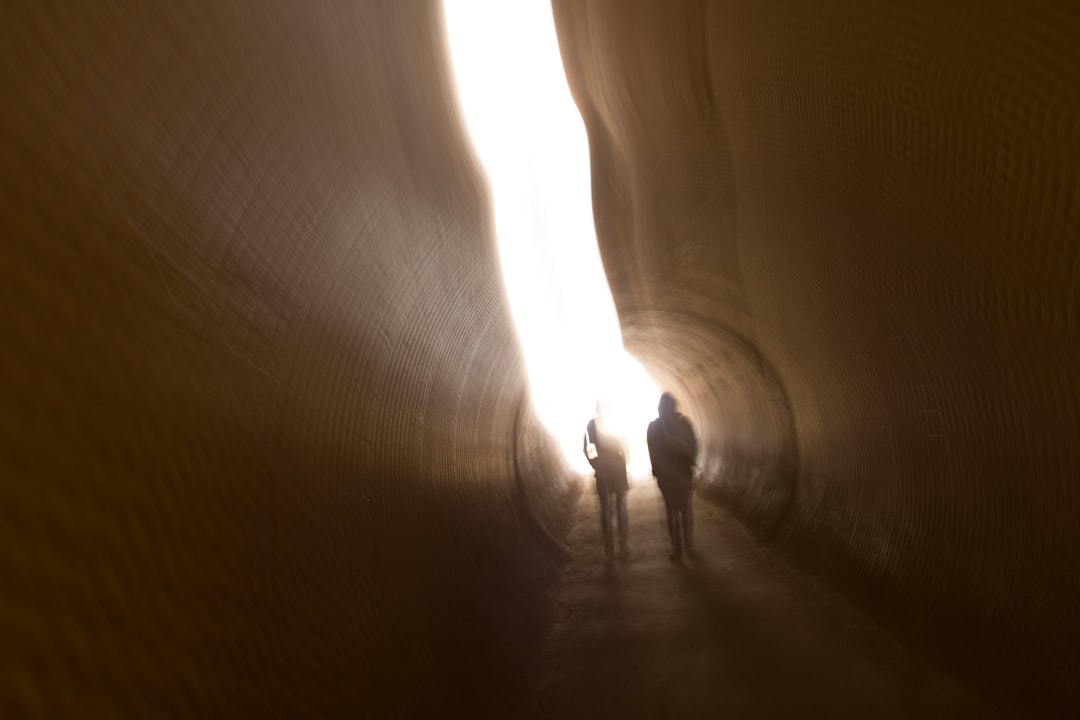The Drake Passage, a body of water that separates South America from Antarctica, is renowned for its tumultuous seas and unpredictable weather. Stretching approximately 600 miles, this passage is often considered one of the most challenging maritime routes in the world. Named after the English explorer Sir Francis Drake, who navigated these waters in the late 16th century, the Drake Passage has become a focal point for adventurers and researchers alike.
Its unique geographical position not only makes it a critical route for vessels heading to Antarctica but also serves as a natural barrier that influences oceanic currents and weather patterns. The passage is characterized by its deep waters and strong currents, which can create rough seas that are both awe-inspiring and intimidating. The confluence of the Atlantic and Pacific Oceans here results in a dynamic marine environment, where sailors must remain vigilant.
The Drake Passage is often described as a rite of passage for those venturing to Antarctica, as it tests the mettle of even the most seasoned mariners. Understanding the intricacies of this waterway is essential for anyone planning to cross it, as it sets the stage for an unforgettable journey into one of the planet’s last frontiers.
Key Takeaways
- The Drake Passage is a body of water between South America’s Cape Horn and the South Shetland Islands of Antarctica, known for its rough seas and challenging sailing conditions.
- The best time to cross the Drake Passage is during the Antarctic summer, from November to March, when the weather is milder and wildlife is abundant.
- When choosing a vessel to cross the Drake Passage, consider factors such as size, stability, and amenities to ensure a comfortable and safe journey.
- Packing essentials for the Drake Passage include warm clothing, waterproof gear, sturdy footwear, and seasickness medication.
- Safety tips for crossing the Drake Passage include following crew instructions, staying hydrated, and being prepared for changing weather conditions.
Best time to cross the Drake Passage
Timing is crucial when planning a crossing of the Drake Passage. The best window for traversing this notorious stretch of water typically falls between late October and early March, coinciding with the Antarctic summer. During these months, the weather tends to be milder, and sea conditions are generally more favorable.
This period not only offers calmer waters but also provides opportunities for wildlife sightings, as many species are more active during the warmer months. Travelers can expect longer daylight hours, which enhances the overall experience of crossing this remarkable passage. However, even during the summer months, conditions can change rapidly.
It is not uncommon for travelers to encounter rough seas, particularly in November and December when storms can still sweep through the region. Therefore, while planning a trip during this optimal timeframe increases the chances of a smoother crossing, it is essential to remain flexible and prepared for sudden changes in weather. Those who embark on this journey should be ready to embrace the unpredictability that defines the Drake Passage, as it is part of what makes the adventure so exhilarating.
Choosing the right vessel

Selecting the appropriate vessel for crossing the Drake Passage is a critical decision that can significantly impact the overall experience. Various types of ships are available, ranging from large cruise liners to smaller expedition vessels. Larger ships often provide more amenities and stability in rough seas, making them a popular choice for those who prioritize comfort.
These vessels typically have advanced stabilizing technology designed to minimize motion, allowing passengers to enjoy their journey with less discomfort. On the other hand, smaller expedition ships offer a more intimate experience and greater access to remote areas of Antarctica. These vessels are often more agile and can navigate through ice-laden waters more effectively than their larger counterparts.
Ultimately, the choice of vessel should align with individual preferences regarding comfort, adventure, and budget. Regardless of the type of ship selected, travelers should ensure that it is well-equipped for navigating the challenges posed by the Drake Passage.
Packing essentials for the Drake Passage
| Item | Quantity | Reason |
|---|---|---|
| Waterproof jacket | 1 | Protection from wind and water |
| Warm layers | 3 | To stay warm in cold temperatures |
| Waterproof pants | 1 | Protection from wind and water |
| Sturdy boots | 1 | For walking on uneven terrain |
| Hat and gloves | 1 set | To keep head and hands warm |
| Sunscreen | 1 | Protection from UV rays |
| Seasickness medication | As needed | To prevent motion sickness |
Packing for a journey across the Drake Passage requires careful consideration of both comfort and practicality. Given the unpredictable weather conditions, layering is key. Travelers should pack moisture-wicking base layers, insulating mid-layers, and waterproof outer layers to protect against wind and rain.
A good quality waterproof jacket and pants are essential, as they will keep individuals dry during unexpected downpours or splashes from waves. Additionally, sturdy footwear is crucial; non-slip shoes or boots will provide stability on deck when navigating rough seas. Beyond clothing, other essentials include sun protection items such as sunglasses and sunscreen, as UV rays can be intense even in cooler temperatures.
A good pair of binoculars can enhance wildlife viewing opportunities during the crossing, allowing travelers to spot seabirds or marine life from a distance. Personal items such as medications for sea sickness should also be included in packing lists. By preparing adequately with these essentials, travelers can ensure a more enjoyable and comfortable experience while crossing this iconic maritime route.
Safety tips for crossing the Drake Passage
Safety should always be a top priority when crossing the Drake Passage. The first step in ensuring a safe journey is to pay close attention to safety briefings provided by crew members before departure. These briefings typically cover emergency procedures, equipment locations, and guidelines for navigating rough seas.
Familiarizing oneself with safety protocols can make a significant difference in how well passengers respond to unexpected situations. Additionally, travelers should always wear life jackets when on deck during rough weather conditions. It is also advisable to stay informed about weather updates throughout the journey, as conditions can change rapidly in this region.
Keeping personal belongings secured and avoiding unnecessary movement around the ship during turbulent times can help prevent accidents. By adhering to safety guidelines and remaining vigilant, travelers can navigate the challenges of the Drake Passage with confidence.
Wildlife spotting in the Drake Passage

One of the most captivating aspects of crossing the Drake Passage is the opportunity for wildlife spotting. This region serves as a migratory route for various species of seabirds, including albatrosses and petrels, which can often be seen gliding gracefully over the waves. The sight of these magnificent birds soaring above the ship adds an enchanting element to the journey.
Additionally, marine mammals such as dolphins and whales are frequently spotted in these waters, particularly during certain times of year when they migrate through the passage. Travelers should remain alert and keep their cameras ready to capture these incredible moments. Many expedition vessels offer guided wildlife watching sessions led by knowledgeable naturalists who can provide insights into the behaviors and habitats of these animals.
Engaging with experts enhances the experience and fosters a deeper appreciation for the unique ecosystem surrounding the Drake Passage. For nature enthusiasts, this aspect of crossing is often one of the highlights of their Antarctic adventure.
Activities to do while crossing the Drake Passage
While crossing the Drake Passage may seem like a straightforward journey from one point to another, there are numerous activities that travelers can engage in to enrich their experience. Many vessels offer educational programs that include lectures on Antarctic history, geology, and wildlife presented by onboard experts. These sessions provide valuable context for what travelers will encounter upon reaching Antarctica and help build excitement for what lies ahead.
In addition to educational activities, passengers can enjoy social gatherings and themed events organized by cruise staff. Whether it’s a trivia night or a photography workshop, these activities foster camaraderie among travelers and create lasting memories during the crossing. For those seeking relaxation, many ships feature lounges or observation decks where passengers can unwind while taking in breathtaking views of the ocean and sky.
Engaging in these activities not only makes time pass more quickly but also enhances the overall experience of crossing this remarkable passage.
Dealing with sea sickness in the Drake Passage
Sea sickness is a common concern for many travelers embarking on a journey across the Drake Passage due to its notorious reputation for rough seas. However, there are several strategies that individuals can employ to mitigate its effects. One effective approach is to choose accommodations wisely; cabins located in the middle of the ship tend to experience less motion than those at either end.
Additionally, staying hydrated and consuming light meals before and during travel can help reduce nausea. Over-the-counter medications such as antihistamines or prescription options like scopolamine patches are also popular remedies for sea sickness. Travelers should consult with their healthcare provider before departure to determine which option may be best suited for them.
Engaging in light physical activity on board—such as walking around or participating in group activities—can also help alleviate symptoms by keeping blood circulation steady. By being proactive about managing sea sickness, travelers can focus on enjoying their adventure rather than being sidelined by discomfort.
Navigating the Drake Passage as a solo traveler
For solo travelers considering a crossing of the Drake Passage, there are unique opportunities and challenges that come with embarking on this journey alone.
This arrangement allows solo adventurers to meet fellow travelers while still enjoying their own space.
Additionally, solo travelers often find that they have more freedom to engage in activities that interest them without having to accommodate others’ preferences. Whether it’s attending lectures or participating in wildlife spotting excursions, solo adventurers can tailor their experience to suit their individual desires. However, it’s important for solo travelers to remain aware of their surroundings and stay connected with crew members or fellow passengers during rough weather conditions to ensure safety throughout their journey.
Cultural significance of the Drake Passage
The cultural significance of the Drake Passage extends beyond its geographical boundaries; it represents a historical crossroads where exploration and adventure converge. Throughout history, this passage has been traversed by explorers seeking new lands and scientific discoveries. The stories of these early adventurers have shaped our understanding of both maritime navigation and Antarctic exploration.
Moreover, indigenous cultures have long held connections to these waters through their own narratives and traditions. The passage serves as a reminder of humanity’s enduring quest for knowledge and connection with nature’s vastness. Today, as travelers embark on journeys across this iconic waterway, they participate in a legacy that honors both past explorers and contemporary efforts to preserve Antarctica’s fragile ecosystem.
Preparing for your Antarctica adventure
Preparing for an adventure to Antarctica via the Drake Passage involves careful planning and consideration of various factors that contribute to an enjoyable experience. Beyond packing appropriate clothing and gear, travelers should take time to research their chosen expedition company thoroughly. Understanding what amenities are offered onboard and what excursions are included will help set expectations for the journey ahead.
Additionally, physical preparation is essential; engaging in regular exercise prior to departure can enhance stamina and overall well-being during travel. Familiarizing oneself with basic first aid skills may also prove beneficial in case of minor injuries or ailments while at sea or on land in Antarctica. By taking these steps toward preparation—both mentally and physically—travelers can embark on their Antarctic adventure with confidence and excitement for what awaits them beyond the Drake Passage.
The Drake Passage is a notorious stretch of water that serves as a gateway to Antarctica, known for its turbulent seas and challenging conditions. For those interested in learning more about the journey to this remote continent, an insightful article on the topic can be found on MyGeoQuest. This article delves into the experiences of travelers who have braved the passage and offers tips for those planning their own adventure. To explore this fascinating read, visit the article on MyGeoQuest.
WATCH NOW! Drake Passage: Earth’s Deadliest Waters Revealed
FAQs
What is the Drake Passage?
The Drake Passage is the body of water between the southern tip of South America and the northern tip of the Antarctic Peninsula. It is known for its rough seas and strong winds, making it one of the most challenging and unpredictable ocean crossings in the world.
How do you get to Antarctica via the Drake Passage?
To get to Antarctica via the Drake Passage, travelers typically embark on a cruise from Ushuaia, Argentina, or Punta Arenas, Chile. The journey can take around two days, depending on weather conditions, and the crossing can be rough due to the strong winds and currents in the area.
What are the challenges of crossing the Drake Passage?
The Drake Passage is known for its rough seas, strong winds, and unpredictable weather. The area is notorious for its turbulent conditions, which can cause seasickness and discomfort for passengers. However, the challenging conditions also make the journey an adventure for many travelers.
What wildlife can be seen in the Drake Passage?
The Drake Passage is home to a variety of wildlife, including seabirds such as albatrosses, petrels, and penguins. Whales, seals, and other marine mammals can also be spotted in the waters of the Drake Passage, making it a popular destination for wildlife enthusiasts.
When is the best time to cross the Drake Passage?
The best time to cross the Drake Passage is during the Antarctic summer, which runs from November to March. During this time, the weather is relatively milder, and the seas are generally calmer, making for a more comfortable and enjoyable crossing.
